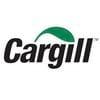INTRODUCTION
Animal feed ingredients can provide appropriate environmentfor fungi growth and many toxic metabolites (mycotoxins) are produced by these molds. In this context, aflatoxin, a secondary toxic metabolite produced by Aspergillus flavus and Aspergillus parasiticus species, play an important role in the food chain (Pimpukdee et al, 2004). Vitamins and mycotoxin binders can be useful to reduce the toxic effects observed in animals (Nahm, 1995). It is well known that vitamins are micronutrients that participate in numerous metabolic processes; therefore, they are essential to optimal health and animal performance. Furthermore, the increase in supplementation of certain vitamins has positive effects, especially for immunity. Considering the above facts, a trial was undertaken with the objective of comparing OVN vitamin levels and commercial levels on performance of broilers challenged by aflatoxin.
MATERIAL AND METHODS
A total of 1,800 day-old Cobb 500 broiler chicks were obtained from a commercial hatchery. The chicks were arranged in a completely randomized design with eight dietary treatments. There were 225 chicks per treatment, each treatment had 15 replication having 15 chicks each in a factorial design (2 x 2 x 2) with two different vitamin levels (low and optimal); two aflatoxins levels (0 and 0.5 ppm) and two levels of mycotoxin binders (0 and 10 kg/ton). Each pen contained old litter, one tube feeder, and a nipple drinker line. Additionally, the experimental house heating was accomplished by forced air furnaces, and cooling was accomplished by negative pressure ventilation using two 48 inch fans pulling air through cool cell pads. Broilers received lighting program as recommend by management guide. All diets were primarily composed of corn and soybean meal and were fed in mash form. Feed intake, weight gain (WG), and feed conversion rate (FCR) were studied. Data were analyzed as a 2 x 2 x 2 factorial by analysis of variance using the General Linear Models procedure of SAS (SAS Institute, 2000). All statements of significance are based on the 0.05 level of probability.
RESULTS AND DISCUSSION
The effects of aflatoxin, vitamins levels e binder on performance of growing chicks are shown in table 1. There was no interaction between the factors studied and the presence of aflatoxin or binder did not affect performance parameters. However, birds fed higher levels of vitamins increased WG and improved FCR (P<0.05) as compared to broilers fed low vitamins levels. Diets deficient in riboflavin and colecarciferol (vitamin D) may significantly increase the susceptibility of broilers to aflatoxin, resulting in a poor growth performance (Santurio, 2000). It suggests that the diet with higher levels of vitamins helped broilers challenged by aflatoxin.
Table 1 – Performance of broilers fed different levels of vitamins with or without aflatoxin and binder in the diet (1-44 days of age).
CONCLUSION
Dietary interventions with higher levels of vitamins may be used to block, retard, or diminish the effects of aflatoxin exposure on performance in broilers.
REFERENCES
NAHM, K. H. (1995). Possibilities for preventing mytoxicosis in domestic folw. World Poultry Science Journal, 51, 177-185.
PIMPUKDEE, K., KUBENA, L. F, BAILEY, C. A., HUEBNER, H. J., AFRIYIE-GYAWU, E. and PHILLIPS, T. D. (2004).Aflatoxin-induced toxicity and depletion of hepatic vitamin a in young broiler chicks: protection of chicks in the presence of low levels of novasil plus in the diet. Poultry Science, 83:737–744
SAS Institute Inc. (2000). Statistical Analysis System, Version 8.0.Cary,NC. (Manual Online)
SANTURIO, J.M. (2000) Micotoxinas e micotoxicoses na avicultura. Revista Brasileira de Ciência Avícola, 2:1-12.














